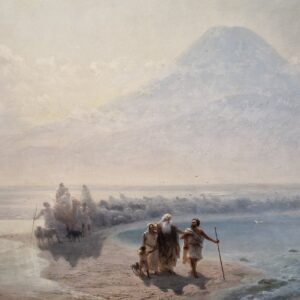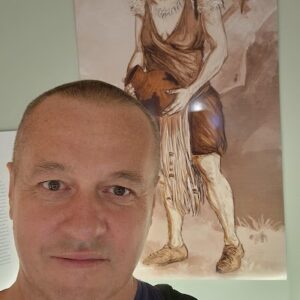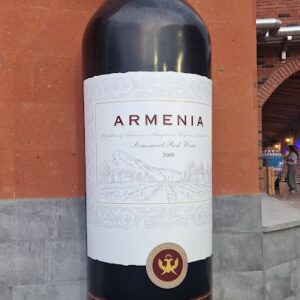The “Yerevan Dialogue” conference, held on September 10 and 11 in Armenia’s capital, was an attempt to expand the country’s “soft power” in one of the world’s most geopolitically challenging positions
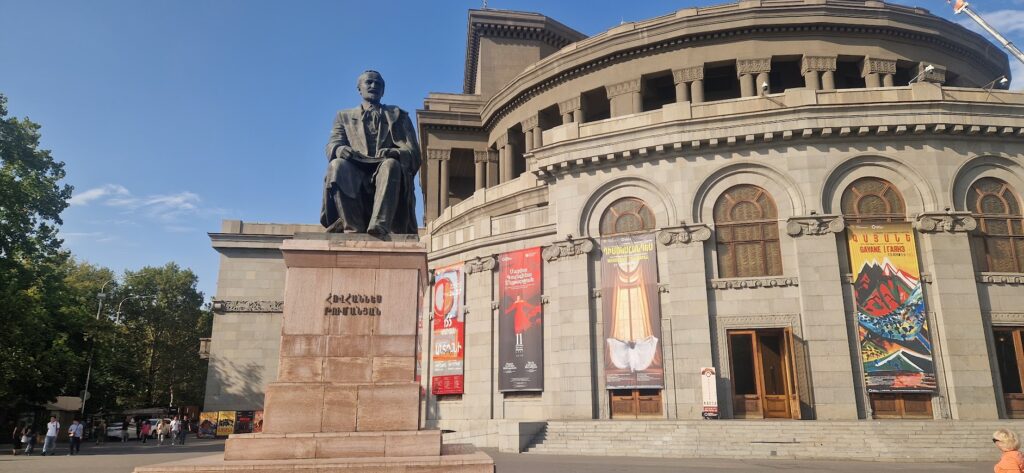 By Robert Čoban
By Robert Čoban
Ashot Hovakimyan is Armenia’s ambassador to Prague, covering Serbia, Croatia, Slovenia, Montenegro, and Bosnia and Herzegovina from the Czech Republic. He was educated in Yerevan and Moscow and speaks Serbian fluently. He graduated from the Institute for Slavic and Balkan Studies in the Russian capital. In the second week of the Ukraine war, at the beginning of March 2022, we had lunch at the Pupin Hotel in Novi Sad, precisely at the spot where the Armenian church stood before its unnecessary demolition in 1964. I asked him why he was covering Serbia from as far away as Prague rather than from a closer embassy, such as in Budapest or Vienna. He replied, “We don’t have diplomatic relations with Hungary!”
After seeing the question mark above my head, he explained the details of a bloody incident that took place in Budapest over 20 years ago.
In brief: on 19th February 2004, Ramil Safarov, an officer in the Azerbaijani army, almost decapitated Armenian officer Gurgen Margaryan with an axe in Budapest. Both attended a three-month NATO seminar as part of the Partnership for Peace program. Safarov was sentenced in Hungary, but the government of Viktor Orbán decided to extradite the killer to Azerbaijan, where he was released, declared a national hero, and promoted to the rank of major. Armenia subsequently severed diplomatic relations with Hungary.
Twenty years after that crime, on a flight to Warsaw (our stopover en route to Yerevan for the “Yerevan Dialogue” conference), I noticed in the program the name of Péter Szijjártó, Hungary’s foreign minister. I learned that the two countries had reestablished diplomatic relations from my daughter Elena, whom I had suggested writing an essay on the incident for her studies in Boston six months prior, prompting her to “follow the case.”
The ‘Yerevan Dialogue’ conference attempted to expand Armenia’s ‘soft power’ in a region facing significant geopolitical challenges
“Isn’t it logical that we would travel from Belgrade to Yerevan via Istanbul rather than going north to Warsaw, then back down along Ukraine’s border, through Slovakia, Hungary, Romania, and over the Black Sea to Armenia?” I asked my travel companion, military analyst Nikola Lunić, who gave me an answer I already knew halfway through my rhetorical question. Of course, Turkey is an ally of Azerbaijan, and Yerevan isn’t a priority for flight connections via Istanbul.
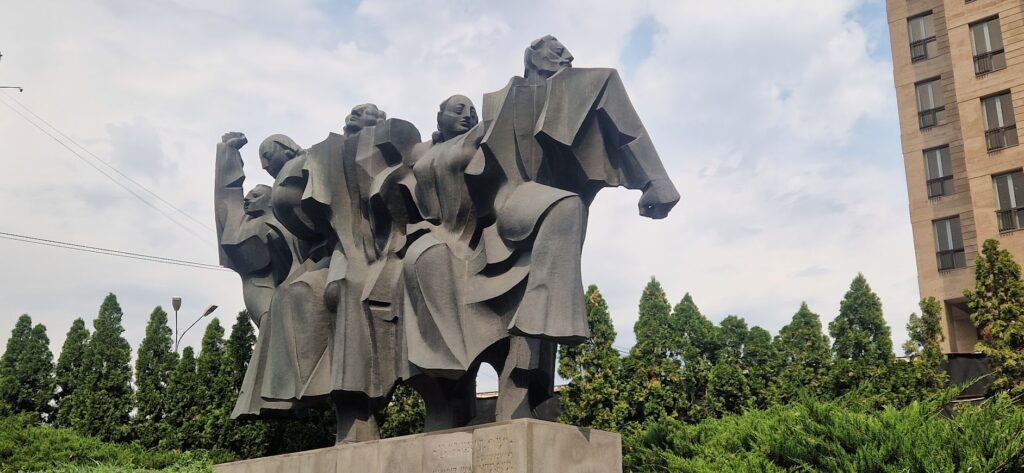 The “Yerevan Dialogue” conference reminded me of the “Doha Forum,” which I reported on for NIN two years ago. Armenia’s desire is understandable—to expand its “soft power” by hosting events that gather statesmen, experts in economics, geopolitics, security, and journalists. Qatar has it much easier, given its resources—not only with the “Doha Forum” but also with the Al Jazeera TV network, the 2022 World Cup, and much more.
The “Yerevan Dialogue” conference reminded me of the “Doha Forum,” which I reported on for NIN two years ago. Armenia’s desire is understandable—to expand its “soft power” by hosting events that gather statesmen, experts in economics, geopolitics, security, and journalists. Qatar has it much easier, given its resources—not only with the “Doha Forum” but also with the Al Jazeera TV network, the 2022 World Cup, and much more.
Armenia lacks such privileges—it has no oil, gas, or other valuable mineral resources, not even lithium, as cynics might say. It lacks the solidarity of “Muslim brothers” around the world. It has no access to the sea and is geopolitically squeezed: to the East, an openly hostile Azerbaijan with which it was at war until last year when, in just a few days, it lost (or, depending on perspective, Azerbaijan regained) Nagorno-Karabakh; to the West, Turkey, Azerbaijan’s ally, which refuses to acknowledge the “crime” (Armenians and some Western countries call it “genocide”) committed against Armenians by the Ottoman Empire in 1915; to the South, the Islamic Republic of Iran; and the North, as some Armenians say with a bitter smile, “unreliable friends”—Georgia, and farther off, Russia. Incidentally, to preserve good relations with Turkey, Serbia officially does not call the 1915 events “genocide,” even though they were committed against a “brotherly Christian people.”
We landed at Zvartnots International Airport, named after the nearby town, at dawn, 10 kilometres from Yerevan.
The brutalist architecture of the concrete Control Tower from the Soviet era (the airport opened in 1961) clashed with the luxury of the VIP lounge, where we were escorted as conference guests immediately after disembarking. The “Seven Visions Resorts and Places, the Dvin” complex in Yerevan, where I stayed, contrasts starkly with the somewhat rundown apartment blocks nearby due to its excessive luxury. Alongside the modern hotel, there is a Music Hall, conference centre, shops, and restaurants.
This amount of money wasn’t made in Armenia. It was built by a wealthy Russian of Armenian descent who amassed his fortune during the breakup of the USSR.
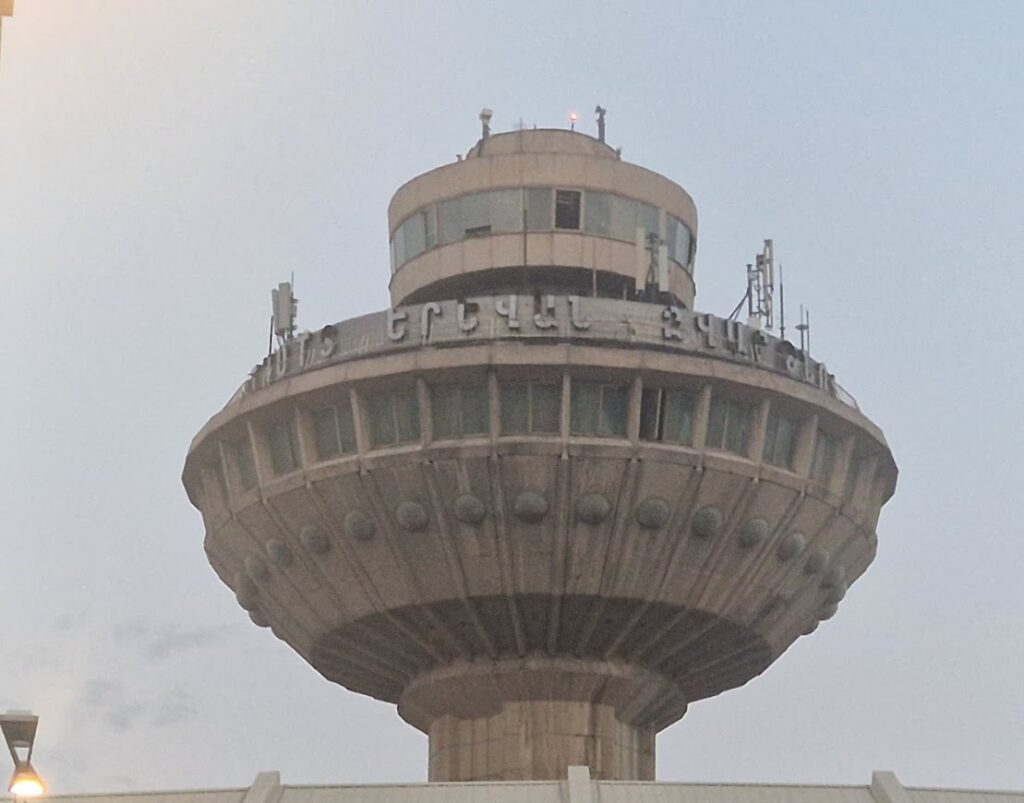 Tatjana Panajotović is our ambassador to Armenia and also covers Georgia on a non-residential basis. While we drink coffee in the garden of the “Marriott” hotel in the city centre, she tells me how she arrived in Yerevan in 2019, before the pandemic, so she knows the region well and strives to strengthen Serbia’s relations with the countries she represents. This isn’t an easy task, as Azerbaijan is the only country in the Caucasus with an official embassy in Belgrade and excellent relations; Georgia has a chargé d’affaires, and Armenia only opened an office in Belgrade a month ago, with the embassy still in Prague. Exporting Serbian arms to Azerbaijan remains a central sticking point in relations between Serbia and Armenia.
Tatjana Panajotović is our ambassador to Armenia and also covers Georgia on a non-residential basis. While we drink coffee in the garden of the “Marriott” hotel in the city centre, she tells me how she arrived in Yerevan in 2019, before the pandemic, so she knows the region well and strives to strengthen Serbia’s relations with the countries she represents. This isn’t an easy task, as Azerbaijan is the only country in the Caucasus with an official embassy in Belgrade and excellent relations; Georgia has a chargé d’affaires, and Armenia only opened an office in Belgrade a month ago, with the embassy still in Prague. Exporting Serbian arms to Azerbaijan remains a central sticking point in relations between Serbia and Armenia.
The brutalist architecture of the Soviet-era Control Tower contrasted sharply with the luxury of the VIP lounge and the modern ‘Seven Visions Resorts and Places, the Dvin’ complex
The Armenians, meanwhile, seem to be trying to forget past wars; there are few reminders of them in the city’s streets. I only saw two murals dedicated to soldiers who fell in the Second Nagorno-Karabakh War in 2020. By contrast, when I was in Baku in 2015 for the European Games, I saw a cemetery for soldiers who died in the First Nagorno-Karabakh War in 1994 outside the Parliament building, as if they wanted to make clear to locals and tourists alike what happened and who was to blame.
The hosts held an “ice-breaking event” the evening before the conference began at Armenia Wine Company, the largest winery in the country, started by the Vardanyan family in 2006. While waiting for Nikola, who was coming from a different hotel, I was joined at the bar by a man in typical American fashion who “works for a think tank that works for the US Department of Defense.” He was interested in my thoughts on relations between Russia and Serbia. When I asked his opinion on Trump’s statement that Haitian migrants eat pets in Springfield, he went to get more wine and never returned.
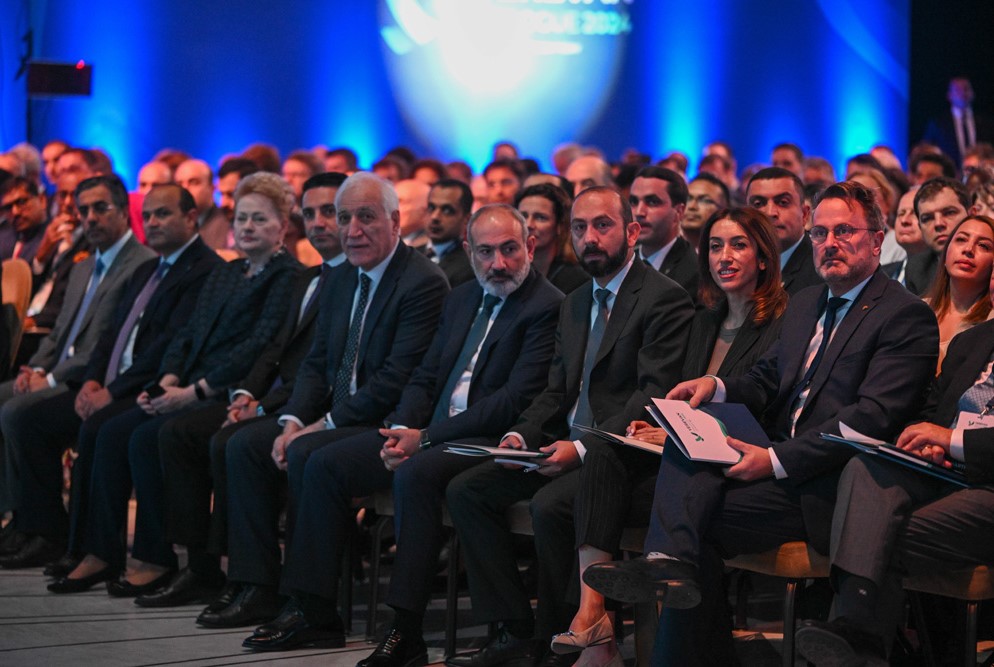
The band was playing Frank Sinatra and Charles Aznavour, arguably the most famous Armenian in the world. We ended up in the company of some young women who work for Ararat Mirzoyan, Armenia’s foreign minister. Later, the minister himself joined us. We discussed Armenia’s current position, and one of the women talked about her country, Georgia, as “the third Caucasus country.” She was referring to Azerbaijan, a country they often avoid naming here. “They took everything they wanted, yet it seems they’re still unsatisfied!” she added resignedly.
A similar situation happened to me in Beirut in 2019 when, as a guest of Brent and Jelena Sadler, I found myself, quite loudly and for reasons I still don’t know, mentioning the word “Israel” in nearly every other sentence over coffee at the Four Seasons hotel. My hosts pointed out that in Lebanon, instead of “Israel,” people say “Dixyland,” and instead of “Jerusalem,” they say “J-City.”
In any case, both in Armenia and Lebanon, these are better “synonyms” than some of those that have spread across the Balkans: “Ustashe,” “Chetniks,” “Shiptars,” “Balijas”…
Half an hour late, the conference began the next day with a speech from Armenia’s Prime Minister, Nikol Pashinyan, who, according to his opponents, “lost all the wars.” In front of a packed audience at the “Dvin,” Pashinyan spoke about the need to connect the South Caucasus countries through infrastructure—roads, railways, pipelines—and through people-to-people contacts.
The closeness between Serbs and Armenians as peoples is intense, though Serbia’s relations with Azerbaijan have strengthened significantly in recent decades
Serbia was represented on one of the panels by Nikola Stojanović, a young state secretary at the Ministry of Foreign Affairs. Nikola is 32 years old and speaks excellent English, French, and Chinese.
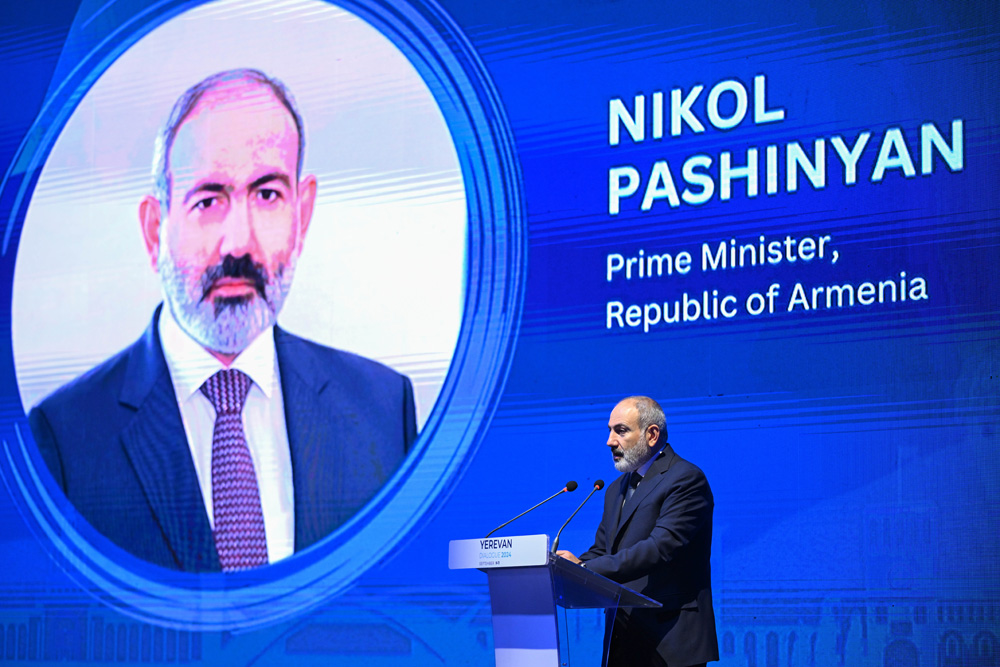
That afternoon, I had lunch with one of Pashinyan’s opponents who didn’t hold back: “He’s a traitor! He’s lost everything!” Two hours later, I was sitting with another friend who supports the current government; he praised Pashinyan and criticised the previous administration. This is something that any foreigner might also experience in Belgrade, highlighting yet another similarity between our two nations.
Armenians genuinely adore Serbs. When we were in Yerevan in 2017, people would invite us to join them for a drink when we heard Serbians on the street. The closeness between Serbs and Armenians as peoples is intense, but it’s also true that over the past 20 years, our country has had much better relations with Azerbaijan. Parks and monuments in Belgrade and Novi Sad are dedicated to Azerbaijani leaders and artists, and in the 21st century, their energy resources and money have greater value than the Christian brotherhood and ties that Serbs and Armenians have shared since the 18th century.
After the conference, I visited the History Museum and the National Gallery of Armenia to explore the country’s rich historical and cultural heritage. I was impressed by the expected wealth of heritage but also disappointed by the somewhat outdated museological presentation of these treasures—it’s all arranged like in a provincial museum in Serbia. Our Armenian friends could benefit from support from EU partners, including experts from our museums and galleries.
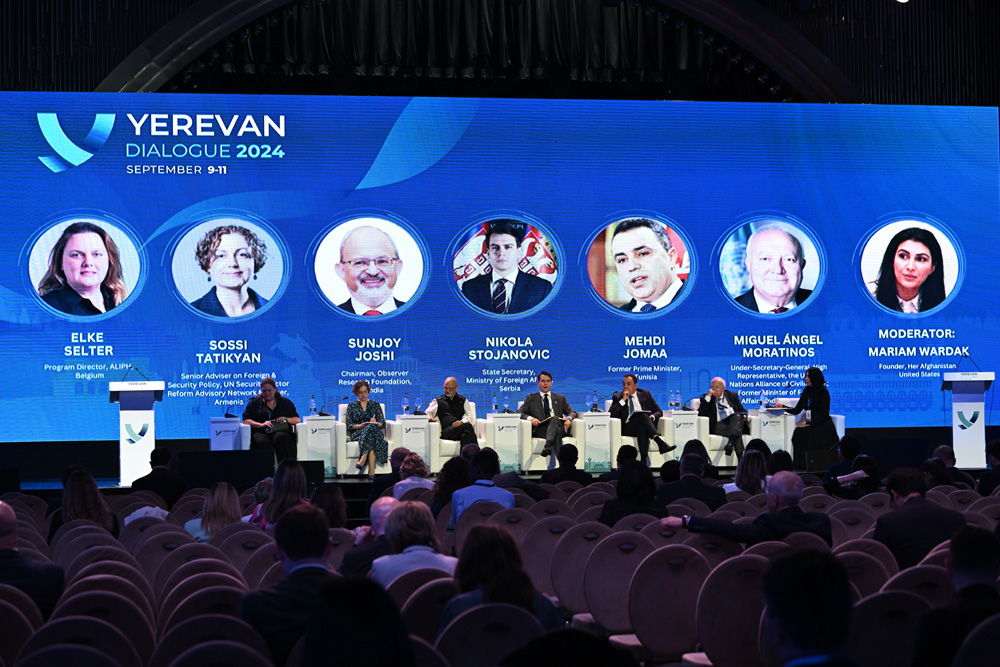
As I ponder a scene from one of the paintings in the National Gallery, depicting the biblical Noah with his family and the animals he saved from the Great Flood descending from Mount Ararat, I reflect on how even Armenia’s greatest symbol—Mount Ararat—is not located in Armenia but in neighbouring Turkey. Ararat lends its name to alcoholic beverages and many other Armenian products, and it’s even popular as a male name, as in the case of the foreign minister mentioned earlier.
David Safaryan (1952), a film director, and Khachatur Almazian (1974), a violinist and music producer—both frequent visitors to Belgrade—hadn’t met before I brought them together that afternoon at “Beer Academy” in Yerevan. They spoke at length and passionately about Sergei Parajanov, the famous Soviet director whom both had the privilege of knowing. Sharing conversation with these two brilliant intellectuals over local craft beer was perhaps the best way to conclude my visit to Yerevan.
As I ponder a painting of Noah and Mount Ararat in Armenia’s National Gallery, I reflect on how even Armenia’s greatest symbol—Mount Ararat—is located in neighbouring Turkey
However, as fate would have it, upon returning to “Dvin” in search of a friend attending another conference, I stumbled upon an event that reminded me of a scene from the film “Hostel.” On two levels of one of the spaces in “Dvin,” participants of that gathering—whites, Arabs, Africans, all from the upper echelons of society, politicians, diplomats, parliamentarians—were drinking champagne and watching a young woman performing acrobatics as she descended on a rope in the central space.
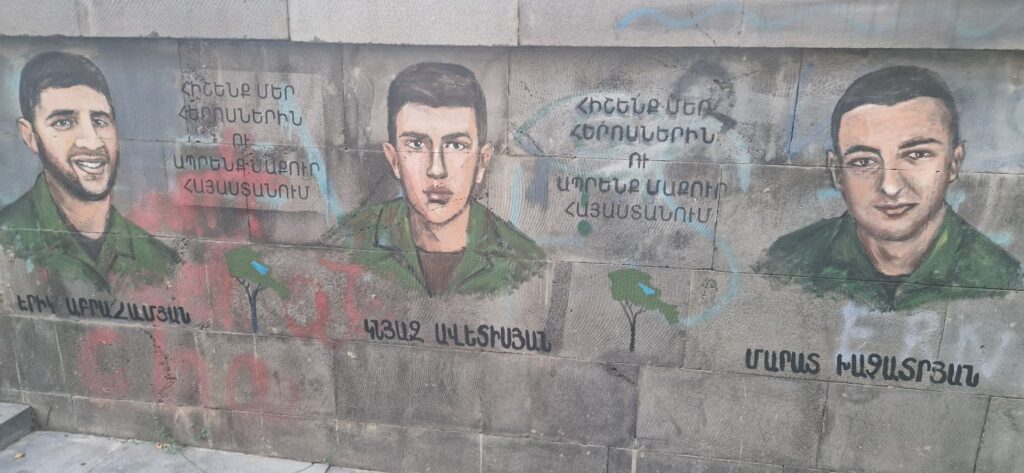 As LOT’s sleep-deprived plane carried us back to Warsaw, I replayed Štulić’s lyrics about “Poland in my heart” and “Gdańsk in ’80, when autumn said – no.” How far is the world today, in the 21st century, from the ideals that Johnny sang about and that we believed in? Will the Armenians use “soft power” to surpass those with money, oil, and gas? Why were there no mass demonstrations by Christians worldwide when Nagorno-Karabakh fell in silence, as we’ve seen nearly a year of solidarity among Muslims for Palestinians in Gaza?
As LOT’s sleep-deprived plane carried us back to Warsaw, I replayed Štulić’s lyrics about “Poland in my heart” and “Gdańsk in ’80, when autumn said – no.” How far is the world today, in the 21st century, from the ideals that Johnny sang about and that we believed in? Will the Armenians use “soft power” to surpass those with money, oil, and gas? Why were there no mass demonstrations by Christians worldwide when Nagorno-Karabakh fell in silence, as we’ve seen nearly a year of solidarity among Muslims for Palestinians in Gaza?
After our hosts told us that the “Yerevan Dialogue” would become a tradition, I said goodbye to Ashot with: “Next year in Yerevan,” hoping that the same slogan isn’t on the minds of some in the “third Caucasus country.”
